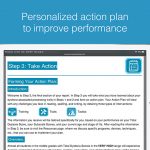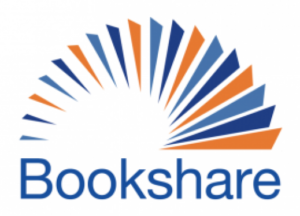
With news of the disruption in special education assessments across the country, I asked Brock to comment on the situation and share how the Neurolearning app could be helpful. The app is available for students ages 7 – 70.
By Brock Eide MD:
A recent article in Hechinger Report describes one way in which the COVID-19 pandemic has been especially harmful for students with dyslexia and other learning differences. The article’s title, Thousands of families in special-education limbo, refers not to the back-bending dance but to the state of suspended animation in which many students with special educational needs now find themselves. The article relates the stories of several young students who, since the first wave of school closures last March, have lost access to school-provided neuropsychological and educational testing, and to the specialized services to which such testing serves as a gateway.
In some states, such as California, statutes requiring timely testing have been officially set aside by state government. In other places stay-at-home and social distancing policies have made student testing impracticable. In either case, student evaluations already underway ground to a halt, and students with newly recognized needs—often recognized or exacerbated due to the new “distance learning” protocols—were unable to begin the evaluation process.
The article is at its best in describing the problems this disruption in testing causes students. Dustin Rynders, a supervising attorney with the advocacy group Disability Rights Texas, sums up the challenges this way: “A student going without an evaluation means they are going to continue to struggle without the services they need to help turn things around.”
However, the article offers little in the way of practical advice to help the children stuck in this state of limbo. They state, “Experts agree that schools should use available data, even if it’s incomplete, to ensure students at least receive the support educators already know is needed.” But this recommendation applies only to students who have already received evaluations, and beyond this they have no suggestions.
 Fortunately, there are several alternatives available that can keep students with dyslexic challenges moving ahead. When a full evaluation is not easily available, the Dyslexia Screening Test App from our partner social purpose partner, Neurolearning SPC, can be used to identify students at risk for dyslexia with a high degree of accuracy. This test can be used on any student aged 7 or older, takes less than an hour to administer, and can be given by an untrained supervisor (parent, teacher, tutor, or school staff person) on any iOS/Apple or android touchscreen device (tablet or smartphone). Even before the start of the pandemic some schools had begun to accept the results of our test in making support decisions on IEPs (Individualized Education Programs) and 504 plans for their students. During the epidemic even more schools have followed this path.
Fortunately, there are several alternatives available that can keep students with dyslexic challenges moving ahead. When a full evaluation is not easily available, the Dyslexia Screening Test App from our partner social purpose partner, Neurolearning SPC, can be used to identify students at risk for dyslexia with a high degree of accuracy. This test can be used on any student aged 7 or older, takes less than an hour to administer, and can be given by an untrained supervisor (parent, teacher, tutor, or school staff person) on any iOS/Apple or android touchscreen device (tablet or smartphone). Even before the start of the pandemic some schools had begun to accept the results of our test in making support decisions on IEPs (Individualized Education Programs) and 504 plans for their students. During the epidemic even more schools have followed this path.
 One extra benefit of our testing is that students who show high or very high-risk results on our app test can also qualify for free services with Bookshare.org, the leading provider in the US of electronic texts for use with text-to-speech readers for individuals with print disabilities. However, it should be clearly understood that the decision to use the results of our screening test for such purposes ultimately rests solely with each school, and our test results do not carry the same legal weight as a signed letter from an assessment professional for demonstrating a legal requirement for services.
One extra benefit of our testing is that students who show high or very high-risk results on our app test can also qualify for free services with Bookshare.org, the leading provider in the US of electronic texts for use with text-to-speech readers for individuals with print disabilities. However, it should be clearly understood that the decision to use the results of our screening test for such purposes ultimately rests solely with each school, and our test results do not carry the same legal weight as a signed letter from an assessment professional for demonstrating a legal requirement for services.
While the Post article focuses solely on testing and services provided by schools, it is important to remember that parents of struggling students don’t always have to wait for their child’s school to take action. Neurolearning’s screening test can be purchased by anyone in the Apple and Google Play App Stores and can be administered to students at home as well as school. The app provides users with a comprehensive report describing each student’s test results. It also provides access to a detailed list of resources that parents can use to begin appropriate intervention in areas like reading, spelling, and writing, without waiting for help from the overburdened schools. So even though comprehensive assessment is now more difficult to obtain than ever before, there’s really no reason to let a child get stuck in “special education limbo.”
Learn more about the Neurolearning Dyslexia app HERE.















